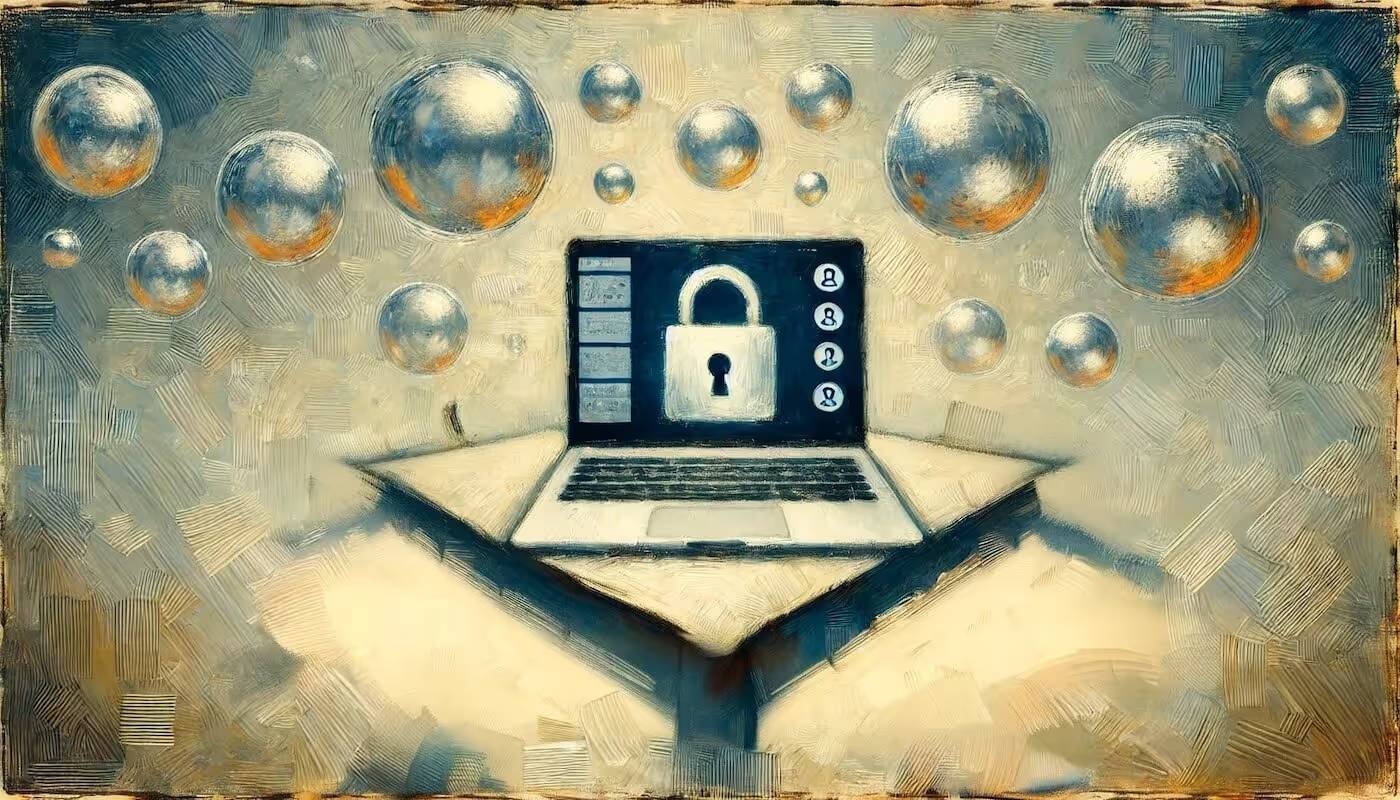
How to Improve Team Working: 5 Proven Methods
Looking to strengthen your team's dynamics? Inject some fun and effectiveness with these 5 proven methods that focus on building, developing, and managing teams for improved cohesion, and turn group work into a smooth, enjoyable process as a result!
Improving team working can lead to better communication, stronger collaboration, and ultimately, better results. By utilising Bubbles, working in a team becomes increasingly efficient. We focus on eradicating needless aspects of team work, and developed Bubbles to satisfy the shift in workplace focus towards building a team, working in a team, and demonstrating great team work. Turning in person or online team meetings into a remote workplace designed to enhance team work and the quality of work produced by team members, Bubbles has changed the game for team members and online team work. Nevertheless, it still remains crucial to optimise your team work. Here are five proven methods to boost cohesion within your own team:
1. Set clear expectations: Make sure every team member understands their role and responsibilities, as well as the team’s overall goals. Create specific, observable, and measurable objectives that can help team members work together towards a common goal. Watch this Bubble of a team member explaining their experience to understand just how critical we believe clear expectations are at Bubbles.
How do clear expectations improve team working?
- Clarity: Clear expectations provide team members with a clear understanding of what is expected of them and what they need to do to contribute to the team's success. This clarity can help to avoid confusion and misunderstandings, as well as prevent preventable mistakes and errors. Bubbles' respond by time is effective in achieving team clarity.
- Accountability: When expectations are clear, team members know that they are responsible for their actions and how their actions impact the team. Expectations help establish a standard of performance and hold team members accountable for meeting that standard.
- Efficiency: If everyone knows what is expected of them, tasks and responsibilities can be distributed and completed more efficiently. This can prevent tasks from being overlooked or duplicated, and team members can work together effectively to achieve team goals.
- Trust: When expectations are clear, team members can trust that each person is doing their part to contribute to the team's success. This trust can help to solidify relationships between team members and build a more cohesive team.

2. Encourage open communication: Establish a communication plan that outlines how team members will communicate with each other, how often they will communicate, and what channels they will use. Provide opportunities for feedback, and encourage team members to share their opinions and perspectives. Watch this Bubble that further clarifies the importance of open communication.
How does open communication improve team working?
- Increases collaboration: Open communication allows team members to share ideas, insights, and expertise with each other, leading to better problem-solving and decision-making. It encourages collaboration and creativity, which can lead to new perspectives and innovative solutions.
- Builds trust: When team members are transparent and open with one another, it promotes trust and respect within the team. This trust is essential to improving team working, as it creates an environment where people feel safe to speak up and share their opinions without fear of judgment or retribution.
- Resolves conflicts: Conflicts are bound to arise when team members work together, but open communication allows teams to address conflicts head-on in a constructive and respectful manner. This can help to resolve conflicts quickly, before they escalate and disrupt team morale.
- Improves morale: When team members feel heard and respected, they are more likely to be satisfied with their work and feel a sense of pride in their contributions. This, in turn, can lead to improved morale and a more positive team culture.
3. Foster teamwork: Encourage collaboration and teamwork through team-building activities, such as trust exercises or problem-solving challenges. Celebrate team successes and recognize individual contributions.
How does this improve team working?
- Improved problem-solving and decision-making: When team members collaborate and work together, they can bring together their diverse knowledge, perspectives, and expertise to solve problems and make better decisions and great teamwork. Working in a team towards a shared goal is extremely beneficial for any business.
- Promotes motivation: Team members are more likely to remain motivated and engaged when they feel they are part of a team that values their contributions and is working towards a common goal. This can lead to increased productivity and better outcomes.
- Enhanced communication: The more team members collaborate, the better their communication becomes. Teamwork promotes open communication, which helps to foster honest, constructive conversations and better feedback.
- Builds trust: Teamwork helps to build trust between team members as they rely on each other to achieve shared goals. This, in turn, can lead to a more positive work environment and increased job satisfaction.
- Higher quality work: Working together helps team members pool their knowledge, skills, and expertise to create higher quality wor
4. Develop leadership: Encourage team members to develop their leadership skills by allowing them to take on leadership roles or by providing leadership training. A strong team leader can help facilitate group decision-making and ensure all team members are working effectively together and staying on track. Watch a member of the Bubbles team emphasise the importance of leadership in their team here.
How does developing leadership improve team working?
- Clear directives: A strong team leader can provide clear directives that help team members understand what is expected of them. This can ensure that everyone is working towards the same goal.
- Improved communication: Leadership development can also help improve communication within the team. Effective leaders know how to communicate well with their team members, ensuring that everyone has a voice and feels heard.
- Encouraging feedback: Effective leaders understand the importance of feedback and encourage team members to give and receive feedback constructively. This helps to build trust amongst team members, improving overall morale and providing an opportunity for continuous improvement.
- Encouraging collaboration: Strong leaders also encourage collaboration between team members. They foster an environment of respect and encourage constructive conflict resolution while facilitating group decision-making.
- Talent development: Leadership development also focuses on talent development, ensuring that team members have the support they need to develop new skills or improve existing ones. This can help to improve team capabilities and lead to better outcomes.
5. Promote continuous learning: Encourage team members to continue learning and developing new skills. Offer training opportunities, mentorship, and resources that can help team members improve their skills and strategies for enhanced work quality. The ability to review and reflect upon meetings and demonstrations is essential for continuous learning, and can be achieved seamlessly with Bubbles Notetaker.
How does promoting continuous learning improve team working?
- Encouraging innovation: Learning new ideas and techniques can help team members think outside the box and develop creative solutions to challenges. Encouraging continuous learning can lead to an innovative team culture where new ideas are encouraged and developed.
- Supporting business objectives: Continuous learning helps team members develop new skills and stay up-to-date with the latest industry trends, which can support a business's objectives. It can also help to ensure that all team members have a shared understanding of the common goals and objectives.
- Improving problem-solving: Learning new skills or techniques can equip team members to solve problems more efficiently and effectively. This can, in turn, improve team's problem solving skills, ultimately leading to better outcomes.
- Enhancing job satisfaction: Continuous learning shows team members that the company is invested in their growth and development. This can improve morale and job satisfaction, leading to a more motivated and productive team.
- Building a culture of learning: When one team member starts to learn and share their new skills, it can motivate others to do the same. Creating a team culture of continuous learning can ultimately lead to a more productive, innovative and cohesive team.
Learn how to record a Bubble, start collaborating asynchronously with your teammates, and begin improving your team working today!
Make your
meetings matter
Loved and trusted by 100,000+ users:
- Automatically Record and Transcribe Meetings
- Extremely Accurate Notes, Summaries, and Action Items powered by AI
- Works with Zoom, Google Meet, and Microsoft Teams
- Save time and follow-up with quick async videos
Simply connect your work Google or Microsoft Calendar to get started.
Collaborate better with your team
Get your point across using screen, video, and audio messages. Bubbles is free, and offers unlimited recordings with a click of a button.
.avif)
Collaborate better with your team
Get your point across using screen, video, and audio messages. Bubbles is free, and offers unlimited recordings with a click of a button.
.avif)













.avif)